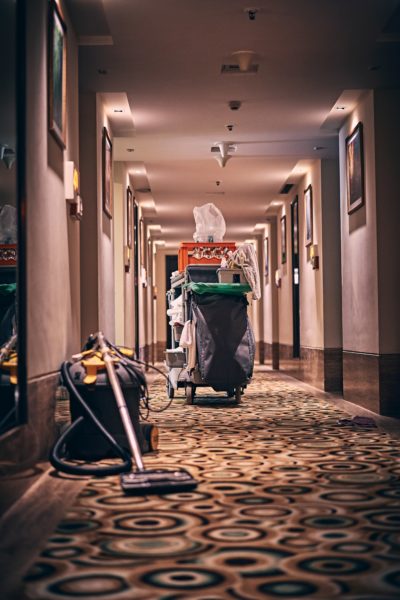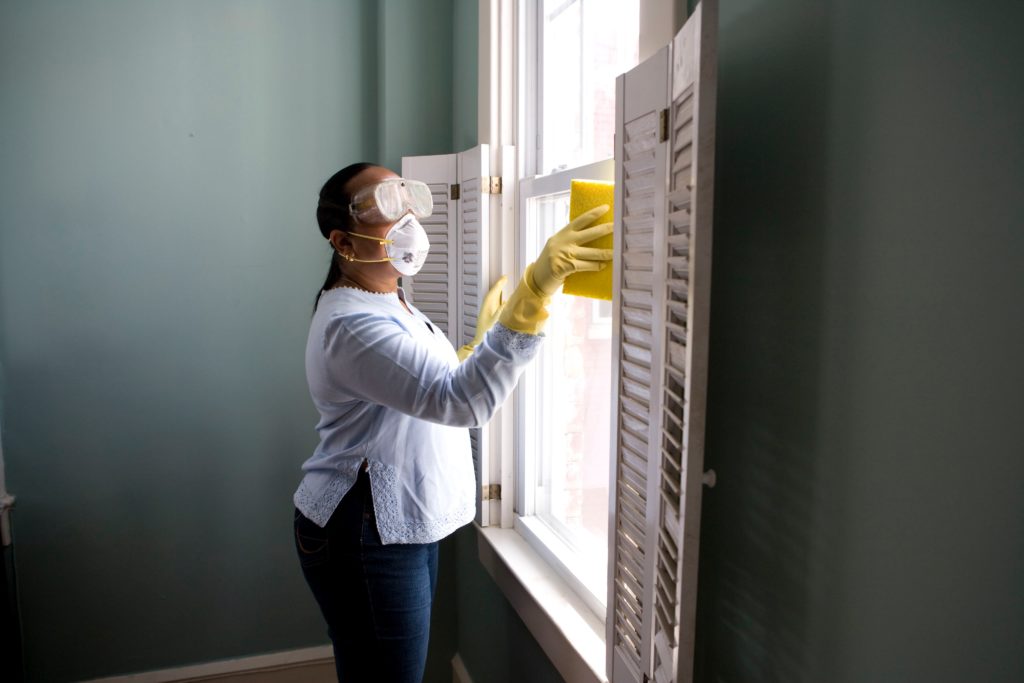How clean should your office be? It’s on every employee’s mind as more people move back into shared work environments after almost a year and a half. In terms of preparing, there are three “levels” – cleaning, sanitizing, and disinfecting – and it’s good to familiarize yourself with what makes these tasks different from one another.
While the terms might sound interchangeable, there are clear distinctions between cleaning, sanitizing, and disinfecting for cleaners of office spaces.
What Are The Differences Between Cleaning, Sanitizing, And Disinfecting?
 Cleaning is the most basic of the three. These services will remove dust, dirt, and debris from low-risk surfaces by wiping, scrubbing, washing and rinsing. It does not guarantee the removal of particles and bacteria you can’t see but does make an office tidier and free of clutter. All-purpose cleaners let staff remove visible spots, stains, and fingerprints, and debris from surfaces more effectively.
Cleaning is the most basic of the three. These services will remove dust, dirt, and debris from low-risk surfaces by wiping, scrubbing, washing and rinsing. It does not guarantee the removal of particles and bacteria you can’t see but does make an office tidier and free of clutter. All-purpose cleaners let staff remove visible spots, stains, and fingerprints, and debris from surfaces more effectively.
Sanitizing reduces the number of bacteria to a safe level (99.9 percent) but does not eliminate viruses and fungi. It’s commonly applied to surfaces that come into contact with food, such as the kitchen. A product’s label will show how well it reduces bacteria populations and other pathogens on surfaces. We must clean all surfaces before performing this task, as dirty surfaces lower how effective the sanitization can be.
Disinfecting is the most thorough of the three, and it’s one of the most reliable ways to lower the risk of spreading germs from surfaces by touch. Products that disinfect will inactivate or destroy bacteria and viruses on hard, nonporous surfaces (as identified on the label), including influenza and rhinovirus.
When Should I Clean, Sanitize, And Disinfect?
 Cleaning and sanitizing are everyday office cleaning services. You know what cleaning is from what you do at home: dusting, vacuuming, sweeping, wiping the windows, etc. Sanitizing is necessary for surfaces that contact with food, and the proper sprays make shared or frequently used surfaces like countertops and keyboards safe to touch again.
Cleaning and sanitizing are everyday office cleaning services. You know what cleaning is from what you do at home: dusting, vacuuming, sweeping, wiping the windows, etc. Sanitizing is necessary for surfaces that contact with food, and the proper sprays make shared or frequently used surfaces like countertops and keyboards safe to touch again.
Disinfection, however, is the complete removal of microorganisms; any product should remove 100 percent of them from surfaces. While a disinfectant spray may not help remove stains, it will effectively prevent the spread of diseases and viruses throughout your office.
Cleaners should disinfect all the surfaces that everyone in your office could touch with their hands, as these are most likely to be contaminated: tables, countertops, doorknobs, faucet handles, handrails, light switches, kitchen cabinet handles, elevator buttons, and electronics.
For COVID-19, it’s necessary that we disinfect and not stop at sanitization. Disinfectants are the only products approved by the American EPA to kill viruses on hard surfaces. As people move back into offices, disinfection by JDI Cleaning is a way to keep them safe and worry-free.


